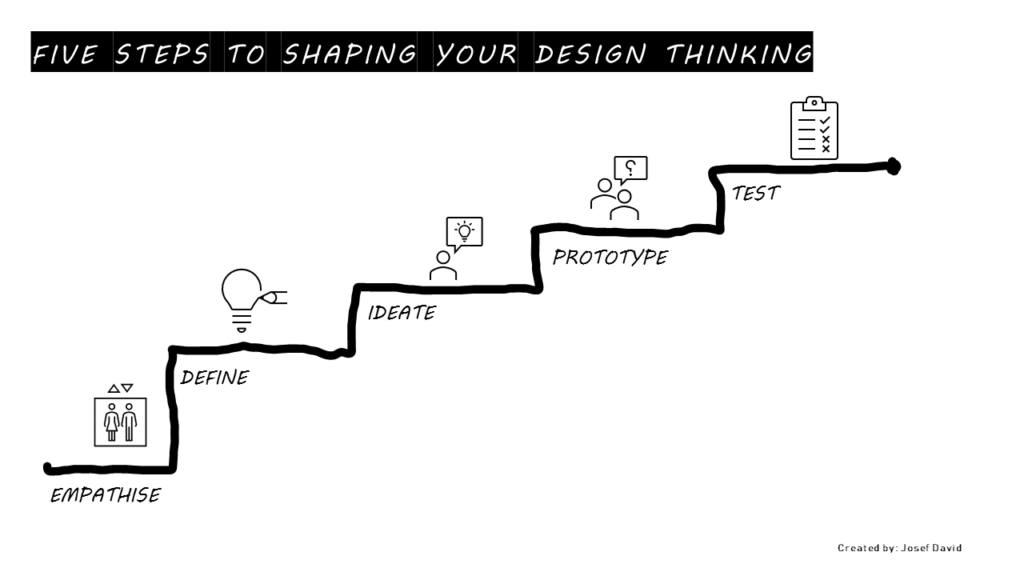What is Design Thinking?
Design Thinking is a problem-solving approach that involves empathy, experimentation, and iteration. It’s a methodology used by designers to solve complex problems and find desirable solutions for clients. This approach draws upon logic, imagination, intuition, and systemic reasoning to explore possibilities of what could be and to create desired outcomes that benefit the end user (the customer).
Design Thinking is not exclusive to designers or those in the creative field. It’s a mindset that can be adopted by anyone who seeks to innovate, improve, and streamline their strategies or solutions. It’s about taking a user-centred perspective and constantly questioning whether you’re focusing on what’s truly important to the end user.
Why Shaping Your Design Thinking?
Shaping your Design Thinking is crucial because it allows you to approach problems from a user-centric perspective. It encourages you to step out of your comfort zone, challenge your assumptions, and redefine your problems in order to identify alternative strategies and solutions that might not be instantly apparent with our initial level of understanding.
Moreover, shaping your Design Thinking can lead to innovation and improvements in every aspect of life – from creating a more efficient workflow in your office to designing a more user-friendly product or service. It’s about making things better by challenging the status quo.
Shaping Your Design Thinking
Shaping your Design Thinking involves five key stages: Empathise, Define, Ideate, Prototype, and Test

1. Empathise: This stage involves understanding the needs of the people you’re designing for. This could involve conducting interviews or surveys to gain an empathetic understanding of their needs.
2. Define: In this stage, you’ll gather all the information you’ve collected during the empathise stage and use it to define the core problems you’ve identified.
3. Ideate: Now it’s time to start generating ideas. You’ll start looking for alternative ways to view the problem and identify innovative solutions.
4. Prototype: This stage involves producing a number of inexpensive, scaled-down versions of the product or specific features found within the product, so you can investigate the problem solutions generated in the previous stage.
5. Test: The final stage involves rigorously testing the complete product using the best solutions identified during the prototyping phase.
This process is iterative, meaning that it does not end at the testing phase. Instead, the insights gained during this process are used to redefine one or more problems and inform the understanding of the users, the conditions of use, how people think, behave, and feel.
Conclusion and Get Started Shaping Your Design Thinking
In conclusion, shaping your Design Thinking is a powerful tool for innovation and problem-solving. It’s not just about creating aesthetically pleasing products or services but about understanding your users’ needs and creating solutions that truly meet those needs.
To get started with shaping your Design Thinking, begin by empathising with your users. Understand their needs, desires, and experiences. Then define your problem statement based on these insights. Start ideating possible solutions and create prototypes to test these ideas. Remember that this process is iterative – you’ll need to go through these stages multiple times before you find a solution that truly meets your users’ needs.
So why wait? Start shaping your Design Thinking today and unlock a world of innovative possibilities!
